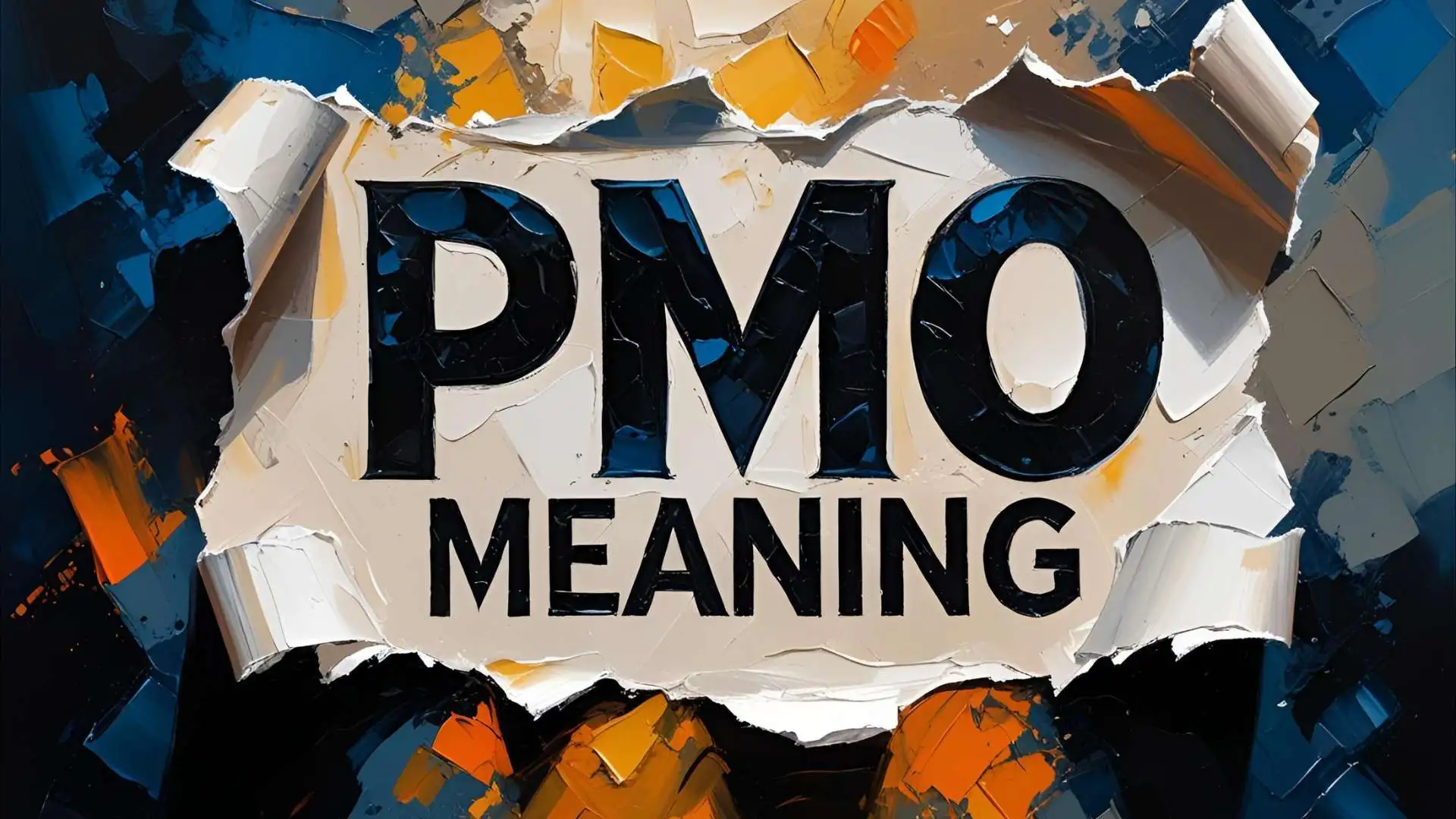Every successful organization today runs on projects. Whether it’s launching a new product, implementing a new system, or restructuring operations, projects drive growth and change.
But without proper coordination, projects easily fail—budgets overrun, deadlines slip, and outcomes fall short.
This is where the Project Management Office (PMO) steps in.
A PMO is more than a support team. It’s a centralized function that standardizes project management practices, aligns projects with business goals, and ensures resources are used effectively.
Over the years, PMOs have evolved from simple administrative units to strategic drivers of organizational success.
In this article, we’ll dive deep into PMO roles and responsibilities, its benefits, challenges, types, job titles, processes, methodologies, and the impact of digital transformation.
By the end, you’ll see how a strong PMO becomes the backbone of project success.
Core Roles and Responsibilities of a PMO

A well-structured PMO plays multiple roles in an organization. At its core, it is responsible for creating consistency in project execution and ensuring teams follow standardized project management processes.
Some of the key responsibilities of a PMO include:
- Standardization: Establishing guidelines, templates, and methodologies so all projects follow the same framework.
- Support: Offering training, mentoring, and coaching to project managers and teams.
- Governance: Monitoring projects to ensure compliance with organizational strategy and regulations.
- Performance Tracking: Measuring KPIs such as budget adherence, timelines, and deliverables.
- Strategic Alignment: Making sure each project contributes to business goals.
“A PMO isn’t just about keeping projects on track. It’s about making sure projects deliver real value to the organization.”
Key Benefits of Establishing a PMO
Organizations that implement a PMO often see measurable improvements in project outcomes. According to the PMI Pulse of the Profession report, companies with a PMO report 33% higher project success rates than those without one.
Benefits of a PMO include:
- Increased efficiency – Projects complete faster due to standardized approaches.
- Cost savings – Resource allocation prevents wasted efforts and budget overruns.
- Better risk management – A centralized body monitors risks across projects.
- Improved communication – Stakeholders and executives get timely, clear updates.
- Higher success rates – More projects meet their goals within time and budget.
Table: PMO Benefits at a Glance
| Benefit | Impact on Organization |
| Standardization | Reduces duplication and confusion |
| Cost Savings | Optimizes resource allocation and budgets |
| Risk Reduction | Anticipates and mitigates potential threats |
| Stakeholder Trust | Builds transparency through reporting |
| Strategic Alignment | Ensures projects deliver real business value |
Common Challenges Faced by PMOs
Even though PMOs add value, they are not free from challenges. Many organizations struggle with:
- Resistance to change – Teams may see PMOs as bureaucratic.
- Lack of executive sponsorship – Without top management backing, PMOs fail to gain authority.
- Resource constraints – Limited staff and budgets make implementation hard.
- Balancing control vs. flexibility – Too much oversight can slow innovation.
- Scope creep – Projects that continuously expand beyond their original goals.
PMO leaders must balance governance with agility. A rigid PMO can frustrate project managers, while a hands-off PMO can lead to project chaos.
Types and Structures of PMOs

Not all PMOs are created equal. The type of PMO depends on how much authority it has and the needs of the organization.
Major Types of PMOs:
- Supportive PMO: Provides templates, best practices, and training but doesn’t enforce compliance.
- Controlling PMO: Monitors projects closely and enforces compliance with set standards.
- Directive PMO: Takes direct control of projects, assigning managers and overseeing execution.
- Enterprise PMO (EPMO): Operates at the organizational level, aligning projects with long-term strategy.
Table: Comparison of PMO Types
| PMO Type | Authority Level | Best For |
| Supportive | Low | Small organizations, startups |
| Controlling | Moderate | Mid-sized companies |
| Directive | High | Large, complex project portfolios |
| Enterprise | Strategic | Corporations with global projects |
PMO Job Titles and Career Paths
Working in a PMO offers multiple career opportunities, from entry-level positions to leadership roles.
- PMO Manager – Oversees the PMO, ensures projects align with strategy.
- Project Manager – Handles individual projects from start to finish.
- Project Coordinator – Provides administrative support, schedules, and reporting.
- Portfolio Manager (PPM) – Manages multiple projects, balancing risks and returns.
- Project Analyst / Process Specialist – Focuses on data, metrics, and process optimization.
- Project Assistants – Support teams with documentation and logistics.
Career progression in PMOs often moves from assistant → coordinator → project manager → PMO manager → portfolio director.
Essential PMO Processes
The processes a PMO puts in place define its effectiveness.
Key PMO Processes:
- Project Lifecycle Management
- Initiation → Planning → Execution → Monitoring → Closure.
- Initiation → Planning → Execution → Monitoring → Closure.
- Project Governance
- Ensures accountability, decision-making frameworks, and compliance.
- Ensures accountability, decision-making frameworks, and compliance.
- Documentation and Metrics
- Status reports, risk logs, lessons learned.
- Status reports, risk logs, lessons learned.
- Oversight and Quality Assurance
- Auditing processes, performance reviews.
- Auditing processes, performance reviews.
- Resource Allocation
- Balancing workloads, avoiding overutilization of staff.
- Balancing workloads, avoiding overutilization of staff.
PMO Alignment with Organizational Strategy

A successful PMO does more than manage projects—it drives the organization’s strategic objectives.
- Strategic Alignment: Ensures all projects support corporate goals.
- Portfolio Management: Prioritizes projects based on ROI, risk, and impact.
- Change Management: Helps employees adapt to new processes and systems.
- Corporate Culture Influence: Embeds project thinking into company culture.
For example, in a tech company, an EPMO ensures that R&D projects align with product roadmaps and market strategies, not just immediate needs.
Stakeholder and Risk Management
Managing stakeholders is a vital PMO responsibility. Without buy-in from stakeholders, projects often face delays or fail completely.
Stakeholder Management Strategies:
- Regular reporting dashboards.
- Early involvement in planning phases.
- Clear communication channels.
- Feedback loops to address concerns.
Risk Management:
- Risk identification through brainstorming and checklists.
- Qualitative and quantitative risk analysis.
- Mitigation strategies and contingency plans.
- Escalation protocols when risks threaten project success.
Standardization and Certifications in PMO

One of the PMO’s greatest strengths is standardization. It eliminates confusion and brings consistency.
Certifications play a key role in professionalizing PMO staff:
- PMP (Project Management Professional)
- PRINCE2 (Projects in Controlled Environments)
- PgMP (Program Management Professional)
- PfMP (Portfolio Management Professional)
- CAPM (Certified Associate in Project Management)
Standardization ensures projects across different departments and regions follow the same playbook.
Leadership and Soft Skills in PMO
Technical skills are important, but PMO leaders must also excel in soft skills:
- Leadership – Inspiring teams and guiding them through challenges.
- Communication – Bridging gaps between executives, managers, and teams.
- Emotional Intelligence – Handling conflicts and motivating teams.
- Problem-Solving – Finding solutions quickly under pressure.
- Strategic Planning – Looking beyond short-term tasks to long-term goals.
“A great PMO manager is both a strategist and a coach.”
Modern PMO Models and Approaches
Today’s PMOs are adapting to different organizational needs.
- Project Repository Model: Focuses on storing and sharing project information.
- Project Coach Model: Emphasizes training and mentoring over control.
- Agile PMOs: Designed for fast-moving industries that prioritize flexibility.
- Hybrid PMOs: Combine Agile and Waterfall for mixed environments.
- Enterprise-Wide PMO: Ensures uniform practices across multiple business units.
PMO Methodologies in Practice
Different industries adopt different project management methodologies within PMOs.
- Agile Project Management – Iterative, flexible, customer-focused.
- Scrum – A subset of Agile with sprints, roles, and ceremonies.
- Waterfall – Traditional linear method, ideal for predictable projects.
- Six Sigma – Focuses on process improvement and defect reduction.
Table: Comparing Methodologies
| Methodology | Strengths | Best For |
| Agile | Flexibility, speed | Software, startups |
| Scrum | Collaboration, iteration | Product development |
| Waterfall | Clear structure | Construction, manufacturing |
| Six Sigma | Data-driven quality | Engineering, manufacturing |
Digital Transformation of PMOs
Technology is reshaping PMOs, making them smarter and more efficient.
Modern Tools:
- Cloud-Based PMO Tools – Jira, Asana, Microsoft Project, Monday.com.
- AI in PMOs – Predictive analytics, resource forecasting, risk detection.
- Dashboard Analytics – Real-time project tracking and decision-making.
- Business Intelligence (BI) – Integrating project data into enterprise analytics.
Future PMOs will rely heavily on AI and automation, shifting their role from reactive oversight to proactive strategy enablement.
Conclusion
The Project Management Office (PMO) has evolved from an administrative function into a strategic powerhouse that drives organizational growth. With the right structure, skilled people, and technology, PMOs improve project outcomes, enhance efficiency, and align projects with corporate strategy.
In the modern business world, PMOs aren’t optional—they’re essential for any organization that wants to deliver consistent, high-value results in an increasingly complex environment.


